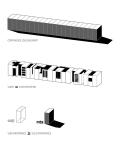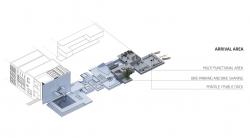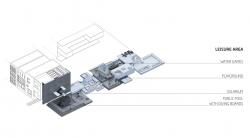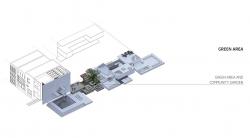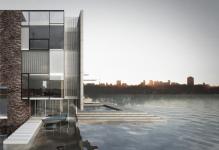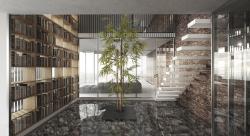The competition proposes the design of a portion of one of the two peninsulas that compose the masterplan Borneo- Sporenburg. Participants must define a single-family residential building, in continuity with the existing buildings, which shows the relationship between the built and the natural element. The new waterfont must therefore be composed of the new house and public functions serving the whole neighborhood.
2013
The West 8 master plan sets imaginative guidelines for the development of streetscape, parking and private open spaces, including guidelines concerning storey height and plot width. The master plan is based on a new approach towards the demand of single-family houses (i.e. a demand regarding generous private outdoor space, a secure parking space, in an atmosphere of safety and individuality). West 8 succeeds creating a framework for high density living spaces, that satisfies the overall requests for a conventional housing unit.
The variety of building types with separated apartment blocks and the waterfront adds personality to the peninsulas. Streets are well overlooked, allowing to have public spaces where one can feel safe. The narrow low-rise housing types are conceived as inwards patio houses. The private outdoor spaces, as well as the parking places, are to be found within the plot, whereas car ports share the street frontage with the entrances.
The master plan requests a 30%-50% void in each of the individual houses. The architects were challenged to develop a space organization in which a small patio should serve both for the daylight penetration and as personal outdoor space. This concept creates a series of new building typologies that suit the high density and the back-to-back structuring of the houses.
The patios are expression of individuality and privacy, but, at the same time, most of the patio are indirect connected to the street and the quays. In the rough and open harbour landscape the patios offer an unexpected and “cozy” world. The sculptural blocks also enclose a collective void, courtyard or garden.
In this context, the void becomes an element of construction which characterizes each individual dwelling, being more important and central than the building structure itself.
The proposed project defines a single family residential building, in continuity with the existing buildings, developing a new area that has a public function, serving the whole neighborhood.
In this project the void is the main element and the heart of the housing.
The rooms are, in fact, designed around the large central void which traverses vertically, connecting sky and water and allowing a greater distribution of sunlight and a natural ventilation.
At the water level, there is the living area with kitchen and living room overlooking water; from here a passage over the water leads to a possible covered mooring space. Upstairs, in addition to the garage and a bicycle storage, a large office space overlooks Borneo, thanks to a large window.
On the upper floors there are two large double bedrooms (one main bedroom and one children bedroom) and service rooms; moreover, here are to be found a recreation and a wellness area. The roof is planned as “green zone”: a green roof and photovoltaic panels are to be installed, and an outdoor living space. Another green technology adopted in the project is the water source heat pump for heating and cooling of the rooms.
At the moment, water and road level are different in height, making them clearly separated from one another. The project aims to link the two levels in a gradual way.
Our idea is to dematerialize the road and create recycled wood surfaces at different heights in order to allow an approaching to the water and to create, at the same time, different utility areas without the use of separation elements, while maintaining a total uniformity in design.
Even here the void is an element of design.
Elena Capodarca & Luca Caroti
Building Void by Elena Capodarca in Netherlands won the WA Award Cycle 18. Please find below the WA Award poster for this project.
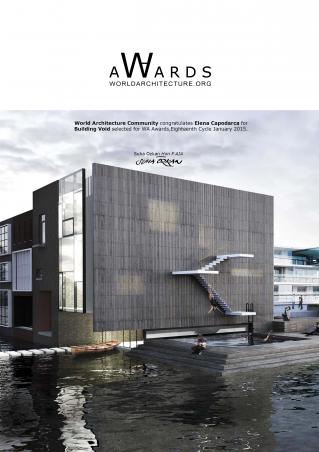
Downloaded 445 times.




